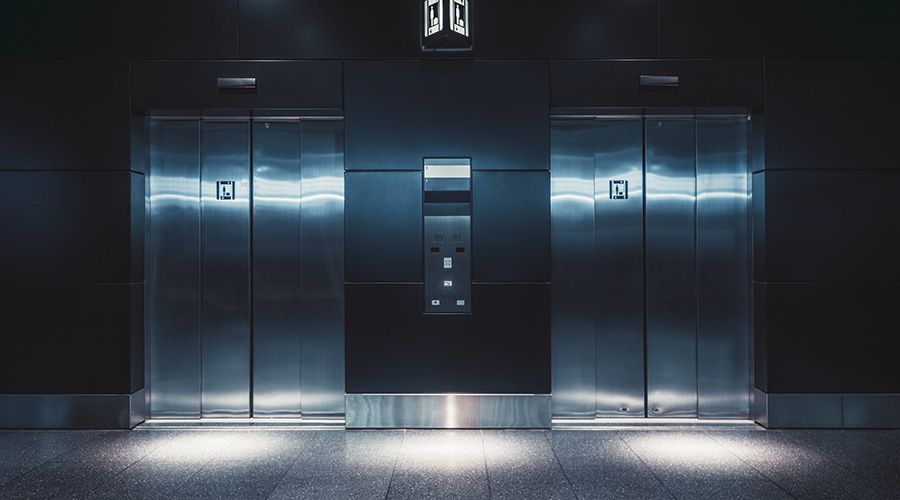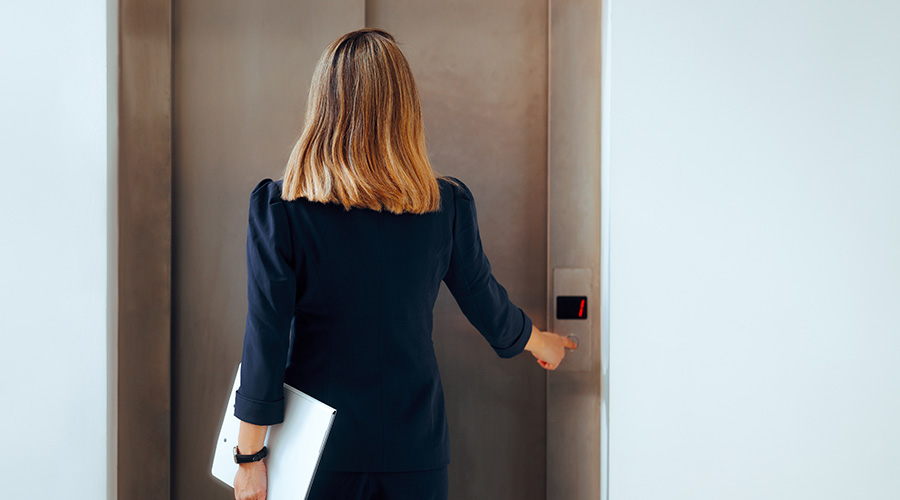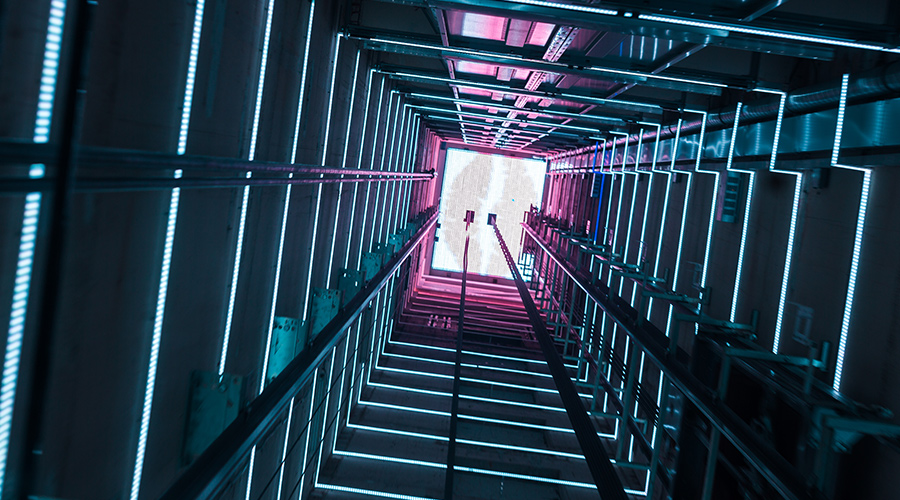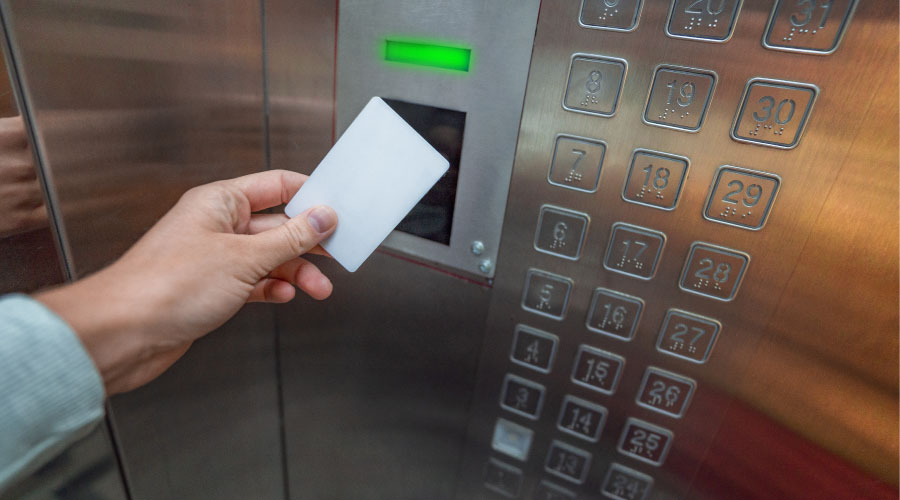Amount of Energy Reduction Varies with Type of Technological Advance
The benefits of LEDs, sensors, and destination-dispatch technology include energy reduction, but the picture is not so clear with other technological advances like closed-loop door technology and machine-room-less elevators (MRLs).
A shift to LEDs in many elevator cabs offers several benefits, including a reduction in energy use. Not only do they require less power than incandescent, halogen, and fluorescent lamps, but they emit less heat. That means less energy is needed to cool the cabs, says Ernst.
One of the simplest ways to reduce energy use is to turn off equipment that’s not being used. This holds true in elevators just as it does in offices and homes. Many modern elevators contain sensors that turn off the lights and fans once the elevator has been inactive for a certain period of time. This saves energy without affecting service.
Technology Gains
Elevator technology has advanced steadily over the past two decades, and some of those gains may help reduce energy use. Destination dispatch technology is a good example.
The primary purpose of destination dispatch is to efficiently move individuals to their destinations. Passengers indicate the floor they’re headed to and then are directed to the elevator that will transport them there as quickly as possible. So individuals headed to floors six through eight might be shepherded to one elevator, and those going to nine through 11, to another.
In theory, destination dispatch systems save energy and prevent some wear-and-tear on the elevators because they should be making fewer stops. However, most of the studies of destination dispatch have focused on reductions in wait times, not reductions in energy use, Caracappa says.
What would be key to energy savings is the way destination dispatch technology affects elevator performance during low-traffic times, Popp says. If the system has a passenger wait, say, an extra 15 seconds to get an elevator that’s already in transit, rather than immediately sending a second elevator, it should save energy without inordinately affecting passenger service. Some systems also reduce elevator speed during low traffic times by, say, ten percent. That also will save energy without affecting service, Popp adds.
Other Advances
Several other technological advances offer a range of benefits, but aren’t seen as energy savers. One example is closed-loop door technology. In these systems, sensors monitor and adjust the speed of the car door operators to account for changes in temperature, humidity, and wind, among other factors. As a result, this technology can make door openings and closings smoother and more controlled. However, most experts say they haven’t seen an impact on energy use.
Another example is machine-room-less elevators. While removing the need for a machine room will boost the square footage available in a building, many consultants say they haven’t seen a clear impact on energy savings.
Moreover, MRLs typically don’t possess the power of standard elevators, which can mean they take longer to move from one floor to another, Swett says. If installing MRLs means adding cars in order to maintain the service levels traditional elevators can provide, any energy savings likely will be negated, she points out.
Related Topics:













